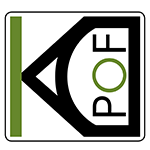The automotive evaluation kit contains:
- 2 SFP-POF media converter boards
- 15 meters/4 in-line connectors POF harness or 40 meters/0 in-line connectors POF harness
- 1000BASE-T SFP modules/UTP & SFP twinax cables
- USB2ALL POF link

By loading the video, you agree to YouTube's privacy policy.
Learn more
The automotive evaluation kit contains:
KDPOF presents the brand new integrated Fiber Optic Transceiver (FOT) KD7051. It is the first device for optical in-vehicle connectivity that incorporates the transceiver IC, optoelectronics, and optics. The integrated FOT is a 100 Mb/s optical port in one single component. “By constructing the ASIC IC, photodiode and LED as one single device, we significantly reduce cost and footprint for automotive Ethernet connectivity at 100 Mb/s,” stated Carlos Pardo, CEO and Co-Founder of KDPOF. “The decreased number of parts also reduces the effort in testing and qualification.”
KDPOF’s new KD7051 thus substantially reduces the overall expense compared to STP (shielded twisted pair of copper wires). Further advantages are no margin stacking between links in the supply chain and supply chain simplification. Consequently, it offers competitive pricing for EMC critical or galvanic isolated critical links. Applications include battery management systems, camera and sensor links, fast Ethernet links and smart antenna links.
KDPOF’s new transceiver IC KD7051 offers a complete new FOT design. It reuses low cost MEMs encapsulation and allows SMD reflow assembly with 8 by 7 mm LGA components. The FOT is fully shielded against electromagnetic radiation. Fiber connection is done with a very simple plastic connector placed on top. The temperature range, from -40 °C to +105 °C, conforms with harsh automotive environmental requirements. With a vibration class of V2, it withstands motor conditions. Additionally, the device endures water without sealing. EMC performance is excellent even with the ECU shield case removed, as shielding is integrated into the PCB component. The assembly of the FOT and the IC in the PCB is simplified. Optics implement Tx and Rx lenses. The first prototypes are available.
As a plastic optical fiber with a large diameter, POF is more cost-effective to manufacture and install: installation is just easy plug and play; winding and clamping is similar to copper cables. Moreover, during the car assembly, the optical harness can be installed in the same process as the copper harness. POF has been present in vehicles for more than 10 years and is installed in millions of cars.
KDPOF has conducted a study examining the influence of home networking on online gaming and video streaming. For online gaming, the delay between an action the player intends to perform in the game and its actual effect on the screen can totally ruin the experience. Among gamers, this latency is known as ping or lag. The action issued by the player has to go through different network segments until it reaches the game server; it is then processed and the response travels back to the gamer. Numbers over 150 ms are a total no-go experience while being under 20 ms is considered a very good behavior.
“There are three main segments that can influence the latency level: online game servers, access network, and home networking,” explained Carlos Pardo, CEO and Co-founder of KDPOF. “Our study showed that the home network plays a key role in the whole experience. Average values as low as 1 ms and up to 30 ms could be found.” A good solution is wired connectivity over plastic optical fiber (POF). It provides very low latency and jitter, just like Ethernet wiring but without visible cabling installed.
The number one home network technology used nowadays in any home is Wi-Fi. Unfortunately, it provides little control over when each node has access to the air. Any packet loss is not noticeable for services such as web browsing, but when delivering video related services, these crashes generate peaks of latency. Those packets need to be retransmitted, extending the time required to reach the other end. If a device in the same environment is connected over Ethernet directly to the access router, the picture changes significantly. “It is not surprising that gamers prefer to connect over wires rather than Wi-Fi due to these effects,” added Carlos Pardo. “Delays are getting even worse with the rapid increase of multiple Wi-Fi access points of Wi-Fi mesh in the home.”
Since wired connectivity adds only negligible latency to the path, it is recommended over wireless for the in-home portion. With its ease of installation, lack of aesthetic impact, robustness, and stability, plastic optical fiber is the ideal solution to contribute to a perfect online gaming experience. The ultimate home network solution is one that combines the advantages of a POF backbone with Wi-Fi access points throughout the home. It secures 1 Gb/s speed to each access point, avoiding any loss inherently present with wireless due to distance, walls or interference. While Wi-Fi links provide latencies on the level of milliseconds, POF is on the level of microseconds, i.e. 1000 times better.
POF can easily be installed in any duct throughout the home: power, coaxial, or telephone conduits, or easily hidden on walls, under carpets or through false ceilings. Devices that connect to the network via Wi-Fi will continue to use that connection, but will enjoy the dedicated 1 Gb/s speed of the POF network. This way, Wi-Fi speed experienced anywhere in the home is the same as next to the router.
KDPOF has successfully participated at the virtual ISCAS 2020 in October with several contributions: a presentation on multi-gigabit Ethernet for the automotive industry, an overview lecture on high-speed data communications over POF, and an important role in the final industry panel session. The IEEE International Symposium on Circuits and Systems (ISCAS) is the flagship conference of the IEEE Circuits and Systems (CAS) Society and the world’s premiere networking forum for researchers in the highly active fields of theory, design, and implementation of circuits and systems.
Session Chairmen Enrique Prefasi Sen, Analog and Mixed Signal Senior Designer of KDPOF, and Alberto Rodríguez-Pérez, Analog and Mixed Signal Manager of KDPOF, have presented the paper “Towards the Multi-Gigabit Ethernet for the Automotive Industry”. The paper, within the special session “Multi-gigabit Wireline & Optical Communication Circuits & Systems Session”, showed the status of Ethernet-based communication solutions, focused on optical links for the automotive industry. They displayed the implementation of a product compatible with the 1000BASE-RHC according to the IEEE Std 802.3bv, which is the first one able to transmit 1 Gbps over POF for automotive. In addition, the KDPOF experts described a new architecture to achieve up to 25 Gbps for automotive. The proposed multi-gigabit system leverages existing technologies such as VCSELs, multi-mode fibers, and photodiodes already developed for the data center industry.
In his lecture, Alberto Rodríguez-Pérez gave an overview of the use of Plastic Optical Fiber as a medium for optical data communications and the techniques needed to get high speed data bitrates over POF. It is an interesting alternative optical communication channel to the Glass Optical Fibers (GOF) for applications that are not required to cover long distances, such as home or automotive networking. However, the reduced low bandwidth of the POF channel imposes big limitations in the maximum data bitrate that can be transmitted through this medium. Consequently, advanced data communication techniques such as channel equalization, data error correction, or data signal modulation need to be applied to achieve data bitrates above 1 Gbps.
Please see here for the video explaining the Multi-Gigabit demo.

By loading the video, you agree to YouTube's privacy policy.
Learn more
Optical network technology overcomes these trends thanks to its inherent galvanic isolation, robustness, low cost, and low weight. Carmakers will benefit from optical links for communications between the 48-volt and the 12-volt domains. For weight, the optical network will save more than 30 percent of the equivalent copper-based harness weight. Optical Ethernet provides 100 Mb/s and 1 Gb/s network solutions today, and multi-gigabit Ethernet is the significant upcoming breakthrough for in-vehicle networks. The standardization effort for optical multi-gigabit is already in progress within the IEEE as an amendment to the Ethernet standard 802.3.

By loading the video, you agree to YouTube's privacy policy.
Learn more
In order to ensure that the installation has been done properly and is operating with a sufficient margin, checking the link quality is recommended. This video demonstrates the KDPOF debugging tool. It allows monitoring of the POF links in an installation where a KDPOF daisy-chain outlet is used. The monitor application will give information about the outlet ID, operating time, connected ports speed and, of course, the link margin of the optical ports.
KDPOF is delighted to present at the virtual Photonics Days Berlin Brandenburg 2020 from October 5 to 8, 2020. On Monday, October 5 at 10:40, César Esteban, Application and Support Manager of KDPOF, will give the presentation “Optical Automotive Ethernet” within the session “Innovative Optical Fibers”. Plastic optical fibers (POF) are the most reliable solution in vehicles since they can withstand harsh environments, vibrations, misalignments, dirtiness, humidity, wide temperature range, etc. Additionally, optical Ethernet generates very low noise and can operate in noisy environments, such as in RF electronic boards.
Recently, ISO (International Organization for Standardization) has added two new sections to the in-vehicle Ethernet series 21111. These newly approved parts are key components to assure reliable implementations of systems that realize in-vehicle Ethernet Optical 1 Gb/s as a physical layer. With the new ISO 21111 sections complementing the existing IEEE Std 802.3bvTM, optical Gigabit connectivity is now entirely standardized. Based on these standards, KDPOF’s optical technology allows a complete, compatible, and interoperating implementation for carmakers and Tier1s.
The KD1053 transceiver perfectly meets the requirements of carmakers by providing high connectivity with a flexible digital host interface, low latency, low jitter, and low linking time. The transceiver is optimized for low power and small footprint and transmits data at 1000/100 Mb/s on standard SI-POF, MC-POF, or PCS, according to 1000BASE-RH (IEEE 802.3bv).
With technological leaps such as electrical vehicles, automated driving, and V2X interconnection rushing through, automotive applications, utilization, and safety requirements are boosting the necessary network speed tremendously. Consequently, in-vehicle networks are on the brink of speeds from one to multiple gigabits per second. Optical Multi-Gigabit Ethernet in the car is on the verge of standardization and implementation. With the approval of the IEEE 802.3 working group, a team of individuals affiliated with more than 15 key carmakers and components suppliers, including KDPOF, has started the standardization of an IEEE 802.3 Automotive Optical Multi-Gigabit Standard with strong support from the industry. KDPOF has already displayed the world’s first demonstration of an automotive-grade optical transmission system with 50 gigabits per second single lane, leveraging datacom components.
KDPOF is looking forward to participating in the upcoming virtual ISCAS 2020 from October 10 to 21 with several contributions: a presentation on multi-gigabit Ethernet for the automotive industry, an overview lecture on high-speed data communications over POF, and an important role in the final industry panel session. The IEEE International Symposium on Circuits and Systems (ISCAS) is the flagship conference of the IEEE Circuits and Systems (CAS) Society and the world’s premiere networking forum for researchers in the highly active fields of theory, design, and implementation of circuits and systems.
On Tuesday, October 13, 2020, from 17:15 to 18:55, session Chairmen Enrique Prefasi Sen, Analog and Mixed Signal Senior Designer of KDPOF, and Alberto Rodríguez-Pérez, Analog and Mixed Signal Manager of KDPOF, will present the paper “Towards the Multi-Gigabit Ethernet for the Automotive Industry”. The paper, within the special session “Multi-gigabit Wireline & Optical Communication Circuits & Systems Session”, will show the status of Ethernet-based communication solutions, focused on optical links for the automotive industry. First, the presenters will display the implementation of a product compatible with the 1000BASE-RHC according to the IEEE Std 802.3bv, which is the first one able to transmit 1 Gbps over POF for automotive. Second, the KDPOF experts will describe a new architecture to achieve up to 25 Gbps for automotive. The proposed multi-gigabit system leverages existing technologies such as VCSELs, multi-mode fibers, and photodiodes already developed for the data center industry.
Alberto Rodríguez-Pérez will give an overview lecture on Saturday, October 17, 2020, from 16:00 to 16:45 in virtual room 2. In his lecture, Alberto will show an overview of the use of Plastic Optical Fiber as a medium for optical data communications and the techniques needed to get high speed data bitrates over POF. It is an interesting alternative optical communication channel to the Glass Optical Fibers (GOF) for applications that are not required to cover long distances, such as home or automotive networking. However, the reduced low bandwidth of the POF channel imposes big limitations in the maximum data bitrate that can be transmitted through this medium. Consequently, advanced data communication techniques such as channel equalization, data error correction, or data signal modulation need to be applied to achieve data bitrates above 1 Gbps.
KDPOF is also substantially involved in the final Industrial Panel Discussion on Wednesday, October 21, 2020, from 16:45 to 17:45. Alberto Rodríguez-Pérez will chair the panel and Rubén Pérez de Aranda, CTO of KDPOF, will participate as panelist.
Aukua Systems Inc., provider of Ethernet test and monitoring solutions, and KDPOF are proud to announce the success of their technology partnership for ISO 21111 standardization. Recently, two additional sections, ISO 21111-3:2020 and ISO 21111-5:2020, of the international in-vehicle Ethernet ISO standard series 21111 have been published. “By providing their MGA2510 Ethernet Test and Monitoring Platform, Aukua Systems have supremely equipped the test setup for ISO certification,” stated Carlos Pardo, CEO and Co-founder of KDPOF.

Suds Rajagopal is Co-Founder of Aukua Systems
KDPOF supports the test ecosystem to make sure that ECUs including their technology will be tested by recognized test houses and based on the ISO standard. “We are delighted to support the overall standard for optical gigabit connectivity in vehicles with ISO 21111 complementing the existing IEEE Std 802.3bvTM,” added Suds Rajagopal, Co-Founder at Aukua Systems. “By leveraging Aukua’s test solutions, carmakers and Tier1s now have access to a complete, compatible, and interoperating implementation based on these standards.”
For reliable implementations of systems that implement in-vehicle Ethernet Optical 1 Gb/s as a physical layer, International Organization for Standardization (ISO) has added two new sections to the in-vehicle Ethernet series 21111: ISO 21111-3:2020 specifies additional features to IEEE 802.3bv, such as wake-up and synchronized link sleep algorithms. ISO 21111-5:2020 specifies requirements at the system level and a complete conformance and interoperability test plan for ECU providers that implement optical 1 Gb/s physical layer as specified in ISO 21111-3.
About Aukua Systems
Aukua Systems Inc. is a leading provider of Ethernet testing and visibility solutions. Whether developing, validating, deploying, supporting or managing applications or networks, their products help improve performance and make networks more secure. The Aukua product line includes packet capture tools, analyzers, traffic generators, and impairment emulators. Since 2015, equipment manufacturers, semiconductor companies, automotive OEMs and Tier1’s, large enterprises, service providers, and government agencies worldwide have depended on Aukua to build stronger networks.
Granite River Labs (GRL), a global leader in engineering services and test solutions for connectivity and charging, and KDPOF announced that a specification for 1 Gb/s optical connectivity in vehicles has been adopted by the International Organization for Standardization (ISO).

Vamshi Kandalla is Executive Vice President and General Manager of Granite River Labs
“GRL is proud to support ISO-standardized Gigabit Ethernet POF (GEPOF) test services and automated test solutions,” said Vamshi Kandalla, Executive Vice President and General Manager of Granite River Labs. “Extending our automotive ethernet testing profile further supports automotive hardware developers, including ECU vendors, to confidently deploy robust, interoperable products and technologies.”
“With ISO standardization of GEPOF, we and GRL jointly provide the network technology to enable new and emerging connected car technologies,” added Carlos Pardo, CEO and Co-Founder of KDPOF. “Carmakers and Tier1 suppliers benefit from integrated, compatible, and interoperable implementation based on our KD1053 IC and GRL’s competencies to perform conformance tests.”
ISO published two new standards for in-vehicle Ethernet series 21111, forming the basis for reliable implementations of systems that realize in-vehicle 1 Gb/s Optical Ethernet as a physical layer. ISO 21111-3:2020 specifies additional features to IEEE 802.3bvTM, such as wake-up and synchronized link sleep algorithms. ISO 21111-5:2020 specifies requirements at the system level and a complete conformance and interoperability test plan for electronic control unit (ECU) providers that implement an optical 1 Gb/s physical layer as specified in ISO 21111-3.
The world’s leading Engineering Services and Test Automation Solutions firm for connectivity and charging, GRL helps engineers solve tough design and validation challenges. GRL began in 2010 with a vision to provide affordable test services to help hardware developers implement digital interface technologies as they become faster, more complex, and more challenging to test. Today, GRL has worked with hundreds of companies supporting the adoption of new and emerging technologies from their worldwide test facilities and R&D centers. For more information, please see www.graniteriverlabs.com.
